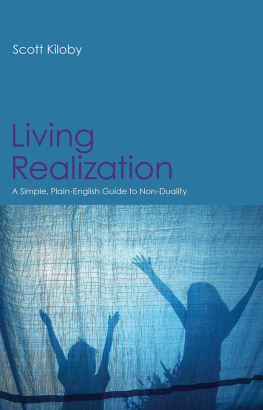Trbners Oriental Series
JAPANESE CIVILIZATION
Trbners Oriental Series
JAPAN
In 3 Volumes
I The Classical Poetry of the Japanese
Basil Hall Chamberlain
II Discovery of Japanese Idealism
Kishio Satomi
III Japanese Civilization
Kishio Satomi
JAPANESE CIVILIZATION
ITS SIGNIFICANCE AND REALIZATION
NICHIRENISM AND THE JAPANESE NATIONAL PRINCIPLES
KISHIO SATOMI
First published in 1923 by
Routledge, Trench, Trbner & Co Ltd
Reprinted 2000, 2001, 2002 by
Routledge
2 Park Square, Milton Park, Abingdon, Oxon, OX14 4RN
Transferred to Digital Printing 2007
Routledge is an imprint of the Taylor & Francis Group
1923 Kishio Satomi
All rights reserved. No part of this book may be reprinted or reproduced or utilized in any form or by any electronic, mechanical, or other means, now known or hereafter invented, including photocopying and recording, or in any information storage or retrieval system, without permission in writing from the publishers.
The publishers have made every effort to contact authors/copyright holders of the works reprinted in Trbners Oriental Series.
This has not been possible in every case, however, and we would welcome correspondence from those individuals/companies we have been unable to trace.
These reprints are taken from original copies of each book. In many cases the condition of these originals is not perfect. The publisher has gone to great lengths to ensure the quality of these reprints, but wishes to point out that certain characteristics of the original copies will, of necessity, be apparent in reprints thereof.
British Library Cataloguing in Publication Data
A CIP catalogue record for this book is available from the British Library
Japanese Civilization
ISBN 0-415-24534-6
Japan: 3 Volumes
ISBN 0-415-24293-2
Trbners Oriental Series
ISBN 0-415-23188-4
JAPANESE CIVILIZATION
ITS SIGNIFICANCE AND REALIZATION
NICHIRENISM AND THE JAPANESE NATIONAL PRINCIPLES
BY
KISHIO SATOMI
WITH PORTRAIT
LONDON:
ROUTLEDGE, TRENCH, TRUBNER & CO. LTD
BROADWAY HOUSE, 68-74 CARTER LANE, E.C.
1923
INTRODUCTION
PROFESSOR SATOMI, although so far unknown in England, is well known in Japan, both as an author of works relating to Nichirenism and as the youngest son of Mr. Chigaku Tanaka, the leading authority on the life and writings of the apostle of Buddhist reformation. There is a powerful society in Japan, the Kokuchukai, of which Mr. Chigaku Tanaka is the president. It is composed entirely of laymen, and its object is to present the ideal religious life, as revealed by Nichiren, free from any obscurities which formalism and the misdirected zeal of various sects may have induced. The activities of this society are mainly directed towards spreading the idea of practical religion over every aspect of life, and bringing the religious influence to bear not only on personal work like art and science, but on the collective work of politics, economics, and military affairs. Mr. Chigaku Tanaka is the one who may be said to be the most active since Nichirens death in 1282 in spreading the doctrine, or perhaps one ought rather to say the ideas, of Nichiren; and his son is an enthusiastic worker in the same field.
Of Nichirens religion it may suffice to say here that its main ideas are: the communion of those living now and henceforth with all who have gone before, and the restoration of primeval connection with the eternal Buddha; and that it is not the worship of an abstract truth, but a life to be lived by every being, human or other, in the identity of man with nature. Nichiren was imbued with the strongest faith that Japanese Buddhism would spread from East to West, and his disciples are earnestly endeavouring to make his prophetic vision a present reality. The Nichirenians count their temples by thousands and their adherents by millions, and may claim recognition as one of the religious forces of the world.
G. F. BARWICK.
March, 1923.
AUTHORS PREFACE
THE harmonization of the civilization of the East with that of the West, is perhaps one of the most important tasks for the establishment of peace on any terms for which all the nations are longing. To accelerate this desired movement of ours, we must begin by sincerely and minutely studying these various civilizations. In the East, especially in Japan, Western civilization is extensively observed by the people, and fully adopted in recent times. While, according to my view, Eastern civilization, in spite of its being of great value, is studied in the West to a far less degree. It is a great pity. Eastern civilization developed mainly in the sphere of the spiritual aspect while Western civilization developed much more in material sciences.
The co-ordination of spiritualism and materialism is not only one of the problems in the history of philosophy, but it is a matter of fact of the world. For instance, still at the present day, the spirit of the Orient and that of the Occident are liable to clash in various ways, promoted largely by such influences as racial prejudice. But spiritualism and materialism are simply two aspects of one and the same thing. The unification, therefore, can be attained only by complete harmonization of the two. However, a thorough understanding of the Oriental civilization requires the most profound study for the following reasons: Firstly, because it has not been much researched in Europe, and, secondly, because it is rooted in the deepest theory and it flourishes on the most solid and sincere practice. The spiritual civilization of the East must be studied by the European nations in addition to their own civilization. It is therefore our pleasant task to introduce our civilization to the West in gratitude for our indebtedness to their introduction of modern sciences.
The chief object of the present work is to make accessible to Western scholars and all people one of the very important aspects of Japanese spiritual civilization which is, in a sense, a result of our synthetic creation by harmonization and unification of several elements. The Author has treated Nichirens Religion, known as the True Mahayana Buddhism, and the Japanese National Principles in this volume, to which he begs to draw the attention of readers.
There exist comparatively few works written by Western scholars introducing these problems, but we cannot expect perfect accuracy therein as far as present conditions are concerned. The present work is intended mainly for general readers, with a few exceptions which are intended for the convenience of scholars. Therefore, an excess of technical interpretations and discussions are omitted in this volume. I would point out that it is only a brief introduction to a most important problem, so that readers must not expect to find detailed information. It is to serve as prolegomena to another more lengthy and technical book of mine in English on these problems, to be published at a future date. Moreover, the present work was written under somewhat difficult conditions owing to my being abroad and being unable to secure suitable reference books.









